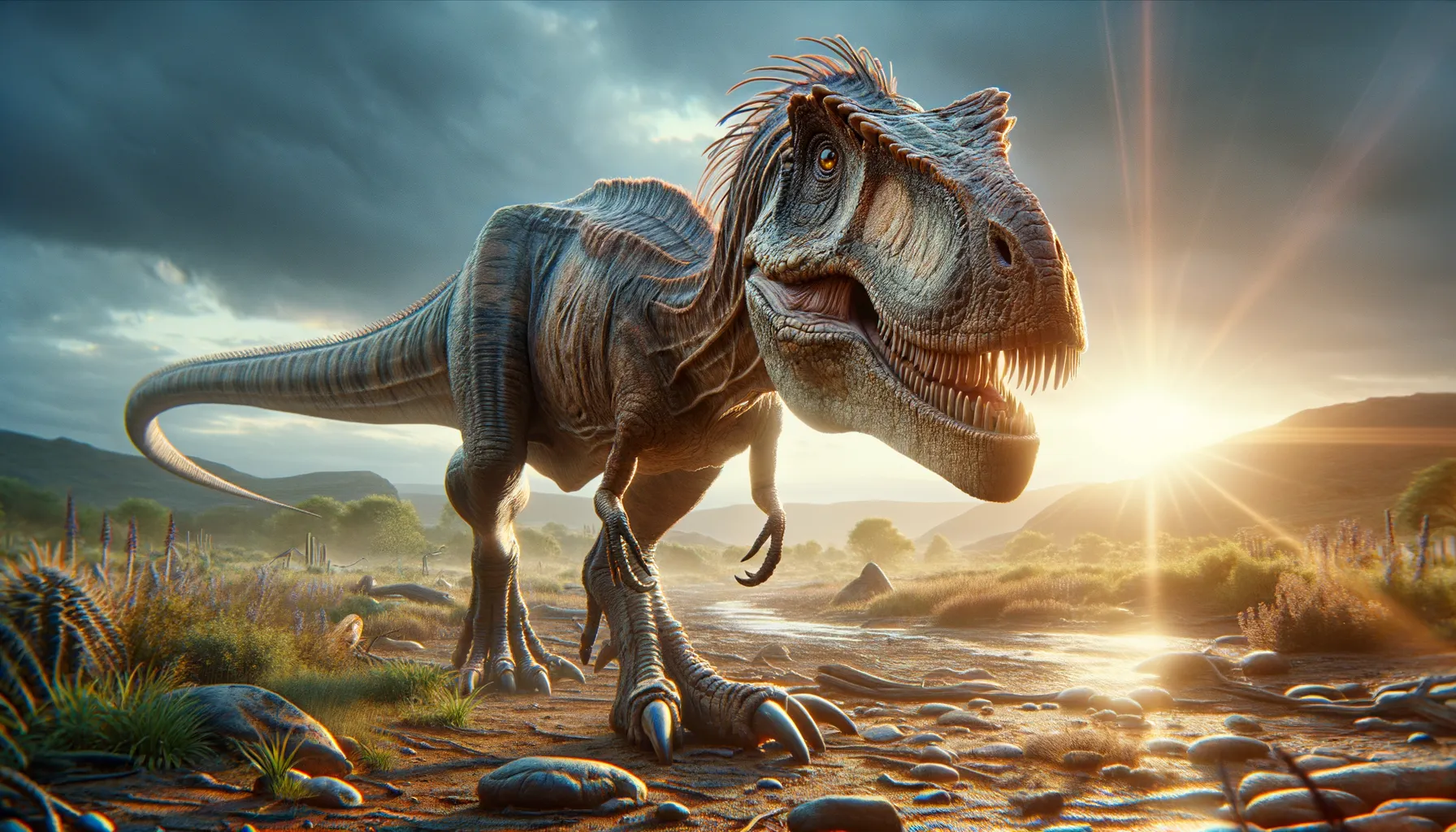
Asiamericana
Mysterious relic from the ancient past!
Period
Cretaceous
Length
Could reach lengths of 6 to 8 meters.
Height
Estimated at about 2 meters at the hip.
Weight
Believed to weigh around 500 to 800 kg.
Asiamericana was a theropod dinosaur known primarily from fossilized teeth. These teeth suggest it was a carnivorous dinosaur, potentially resembling relatives like Allosaurus. The genus name hints at its possible connection between Asian and American dinosaurs, though its exact classification remains uncertain due to limited fossil evidence.
Diet
Asiamericana was a carnivore, primarily feeding on other dinosaurs. Its sharp teeth indicate it was adapted to a diet of meat, likely preying on smaller herbivorous dinosaurs or scavenging.
Hunting
This dinosaur likely relied on ambush tactics, using its potentially heightened senses to detect prey. Its sharp teeth suggest it could efficiently tear through flesh, indicating it might have been an active hunter.
Environmental challenges
During the Cretaceous period, Asiamericana faced a dynamic environment with fluctuating climates. Volcanic activity and shifting landmasses could have presented challenges, causing habitat changes. Competition for food sources with other predators likely added to its survival obstacles.
Speed
Estimated to be moderately fast for its size.
Lifespan
Lived for approximately 20 to 30 years.
First discovery
Described from teeth found in Uzbekistan.
Fun Facts
- Asiamericana is an enigmatic dinosaur known only from a single tooth, discovered in Uzbekistan.
- The name 'Asiamericana' was given because it's believed to have similarities with fossils found in both Asia and North America.
- Asiamericana lived during the Late Cretaceous period, around 70 million years ago.
- Despite being known from just one tooth, scientists think Asiamericana may have been a carnivorous dinosaur.
- Researchers are still debating whether Asiamericana was a separate genus or part of another known dinosaur group.
- The limited fossil evidence of Asiamericana makes it one of the many mysteries of paleontology.
- Asiamericana's discovery highlights the fascinating connections between ancient ecosystems across continents.
Growth and Development
Like other theropods, Asiamericana would have undergone rapid growth during its early years. It likely reached full size relatively quickly to avoid predation. Its development might have involved a change in diet as it aged, starting with smaller prey and transitioning to larger animals.
Habitat
Asiamericana lived in what is now Central Asia, which during its time was a mix of coastal regions and inland areas with lush vegetation. This environment would have provided plenty of prey opportunities. Seasonal changes might have affected food availability, influencing migration and hunting patterns.
Interaction with other species
As a predator, Asiamericana would have interacted primarily with herbivorous dinosaurs it hunted. Competition with other carnivores for territory and food sources would have been common. Fossil evidence indicates it shared its environment with a diverse array of dinosaur species.
Natural lifespan
Asiamericana might have lived up to 30 years in the wild.
Reproduction
Asiamericana likely laid eggs, similar to other theropods. Nesting behaviors could have involved guarding the eggs until they hatched. Hatchlings would have been vulnerable to predators, requiring some protection in their early life stages.
Social behaviour
Little is known about Asiamericana's social behavior due to limited fossil evidence. It may have been solitary, like many predators, but might have also hunted in groups if it benefited from such behavior. Communication methods remain speculative but could involve vocalizations or visual displays.
Fossil locations
Asiamericana fossils, mainly teeth, have been found in the Dzharakuduk area of Uzbekistan. These discoveries provide crucial insight into the prehistoric ecosystems of Central Asia. The site's geology offers evidence of the diverse fauna that existed during the Cretaceous period.
